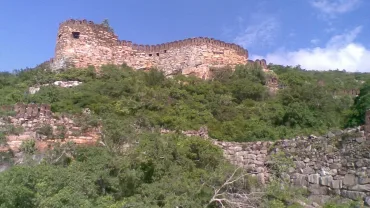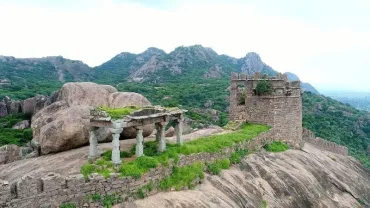- Blog
- 05 Dec 2021
About Gandikota is a village on the right bank of the river Penna, Gandikota area was first identified and made Sand fort in 1123 by Kakatiya Raja of nearby Bommanapalle village and a subordinate of Ahavamalla Someswara I, Kalyani Chalukya ruler. Gandikota came under the rule of Kakatiya dynasty from 1239 A.D to 1304 A.D […]
- Blog
- 21 Nov 2021
About Udayagiri Fort Nellore It is at a height of 3079 feet With beautiful waterfalls and access is only by steps. During the rule of the Gajapathis and the Vijayanagar Rulers, this Town was a splendor. The ruins of 365 Temples found in the Town reflected the sculpture and architecture of various periods. The structure […]
- Blog
- 15 Nov 2021
About Kondaveedu Fort Kondaveedu Fort was established in 1115 CE by Gopanna, a commander of Buddhavarma of the Telugu Choda dynasty. Later it came under the Kakatiyas and was occupied by Prolaya Vema Reddi (1325–1353) who shifted his capital from Addanki to Kondaveedu. Later, the fort was under the control of Vijayanagar Kings, Gajapatis, Golkonda […]


